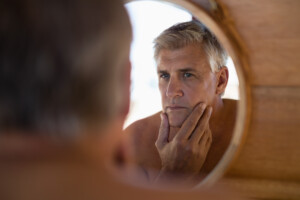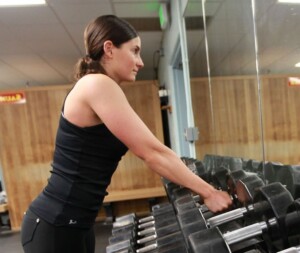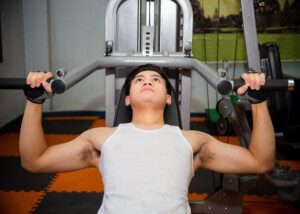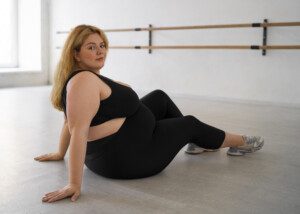Percentage of New Moles in Older People that Become Melanoma?

A new mole in an older adult has a higher chance of becoming melanoma.
But do you know what percentage of new moles in people over 50 or even 40 eventually turn into melanoma? (more…)
Why Not Prophylactic Removal of New Moles in Older People?

If new moles later in life are concerning, why don’t doctors just remove them to play safe rather than having the patient continuously worry about melanoma? (more…)
Are New Moles in Older Age Really Dangerous or Is Data Lacking?

So you’re scared like sh** that your tiny new mole is an early melanoma because you read that older people are not supposed to get new moles! (more…)
Over 50 and Have a New Mole? Melanoma Alert or just Hype ??

New moles over age 50: Have you figured out yet what to believe after googling all over creation about melanoma’s connection to new moles in older people? (more…)
Is Bodybuilding and Weightlifting Good for Down Syndrome?
People with Down syndrome can work out at a gym, lifting weights and building muscle.
Jake is a man with Down syndrome who loves bodybuilding and weightlifting at a chain health club–pumping iron and feeling as “normal” as all the other muscle guys in the gym.
When I first noticed him he was in his 20s and regularly visited one of the gym chains that I often went to. His father was always there, but they worked out separately.
I will tell you what it was like (in the present tense), observing a young man with Down syndrome lifting weights at a gym.
Jake is proud to go off on his own and lift weights independently, feeling just like any other non-handicapped muscle guy at the gym.
Despite the Down syndrome, Jake is perfectly independent when it comes to loading barbells, loading weight plates on lifting machines, adjusting resistance machines, and doing sets of various weightlifting routines.
Jake can occasionally be seen flexing his muscles before the mirror.
If you hear very loud grunting, it’s probably Jake as he pushes out weights on the chest press machine – macho-sounding, prolonged grunting.
Jake will even show off his biceps to muscle guys who tower over him. He feels just like one of them.
- Jake gets no medals for his gym workouts.
- He doesn’t get to stand on podiums.
- He doesn’t receive hugs.
Yet it’s obvious that lifting weights among “normal,” mainstream people — particularly other men who are tall and muscled — creates in Jake a wealth of self-esteem and self-confidence.
A feeling of equality and inclusion.
At the gym, Jake is participating in the same pursuits that “normal” non-disabled people are participating in.
This man with Down syndrome is equal to the mainstream inside this gym.
Jake’s level of mental retardation is mild; he is high-functioning.
And inside that gym, Jake is just like everyone else. Though he can’t lift as much weight as the big guys, he can out-lift many other people at the gym.
Jake’s middle-aged father is in superb physical condition. This is a guy who looks like he could take out half a dozen young punks in under 30 seconds.
What a wonderful thing that this father of a child with Down syndrome has instilled in that child such an intense passion — and knowledge — of strength training and lifting weights, and has encouraged him to join the mainstream.
Benefits of Weightlifting for Down Syndrome
“A common issue with Down syndrome is weak muscle tone or hypotonia,” says Julie Joffrion, CPT/ACSM, owner at All Inclusive Health, a personal training studio in New Orleans that offers options to those with disabilities.
“However, just because someone with Down syndrome has weak muscle tone, that doesn’t mean they cannot acquire strength in their muscles,” continues Joffrion.
“From childhood and on into adulthood, continued exercise and strength training is beneficial to not just muscular strength, but overall health as well.
“As with any bodybuilding, the goal is to overload the muscle so it becomes stronger over time.
“However, those with physical disabilities, such as Down syndrome, may need to be monitored as they learn how much they can handle.
“The more that the weakened muscle tone is worked and built upon, the stronger the muscles become.
“For someone with Down syndrome, they should also work on developing their balance and coordination to build the muscles in different areas.
“With muscle building and other forms of exercise, individuals with Down syndrome should take caution regarding impact activity on joint stability, especially when there is associated muscle instability and skeletal weakness.”
All Inclusive Health’s training services include fitness/body composition assessments, nutrition planning, running programs and customized programs for clients with disabilities or injuries.
 Lorra Garrick has been covering medical, fitness and cybersecurity topics for many years, having written thousands of articles for print magazines and websites, including as a ghostwriter. She’s also a former ACE-certified personal trainer.
Lorra Garrick has been covering medical, fitness and cybersecurity topics for many years, having written thousands of articles for print magazines and websites, including as a ghostwriter. She’s also a former ACE-certified personal trainer.
Childfree Couples Offer Snappy Comebacks to Rude Questions

Though many childfree couples relish boldly taking on rude questions & comments, others hate this.
I interviewed actual childfree couples to see what kind of great comebacks they had in their tool bag. (more…)
Childless by Choice? Great Responses to Rude Comments

Surprisingly, the childless couple gets flack from people they just meet!
If you’re childless by choice, you must be ready to put these numbskulls in their place.
If someone says to you:
“Don’t you think it’s selfish not to have kids?” (or something with the word “selfish” in it)
Say, “What have YOU done for charity lately? Every month I take my dog to the nursing home and give my time to bring joy to those lonely residents.
I’m always contributing something to Good Will, and I make donations to (list the foundations). I also volunteer for Special Olympics and make it a point never to make rude comments to nice people.
So…tell me how YOU give YOUR time to making the world a better place to live.” Smile sweetly and watch the person get tongue-tied.

“You may not want kids, but what about your husband? ALL men want kids!”
Say, “Really? There are 2 billion men on this planet. Have you spoken to all of them?”
Then say, “I don’t care what all men want. MY man wants to be childfree like me. Wanna take it up with him? He’s got a few moments to speak with you after his anger management class.”
“But having kids will make you a complete woman!”
Say, “Every month I get a real nasty case of PMS, and I look hot in a mini skirt and my husband thinks I’m the sexiest thing alive, so don’t go telling me I’m an incomplete woman. By the way, did you know you have excess hair under your nose?”
“Why don’t you like children?”
Say, “Do you have a puppy?” Ask this only if you know the person doesn’t have one. Then ask, “Gee, how come you don’t like puppies?”
Then get more serious and say point-blank, “Where’s the data that states that just because a woman chooses to be childless, that they don’t like kids?”
Wait for response, and smirk a little as the person realizes you just cornered her (or him).
If you actually don’t like kids (which is true for some childless by choice couples), then be honest.
You see, when you attempt to deny the truth, this gives more opportunity for the person to hassle you.
But if you admit you don’t like kids (if that’s true), then the person might be left wondering how to hassle you.
Say, “If I had kids, I wouldn’t know what to do with them.” Then smile. Chances are high that the person will clam up.
If all of this fails, interrupt the rude person with an authoritative voice: “Guess what! Time to change the subject! How much do you earn at work?”
I realize that these responses are more brazen than what many women (and men) would feel comfortable with using, but you can modify these responses or leave out their concluding zingers. Being childless by choice does not give people a pass on being rude.
 Lorra Garrick has been covering medical, fitness and cybersecurity topics for many years, having written thousands of articles for print magazines and websites, including as a ghostwriter. She’s also a former ACE-certified personal trainer.
Lorra Garrick has been covering medical, fitness and cybersecurity topics for many years, having written thousands of articles for print magazines and websites, including as a ghostwriter. She’s also a former ACE-certified personal trainer.
Free Weight Area & Women: How to De-Intimidate Yourself

If you’re intimidated by the gym’s free weight area, here are ways to undo this feeling and make ANY woman feel EMPOWERED by the free weights section! (more…)
How to Train Cancer Survivors in the Gym

Gym workouts can benefit cancer survivors in so many ways.
Many cancer patients needn’t wait until their illness is in remission to engage in strength and cardio training, as long as exercise is custom-fit to their unique situation, and they have their physician’s clearance. (more…)
What Are the Best Supplements for Healthy Breasts?

According to a medical doctor, there are quite a few supplements that are the best for breast health.
No matter how “healthy” you think your diet is, you still need to supplement with at least some of the nutrients in the following list. (more…)
































































